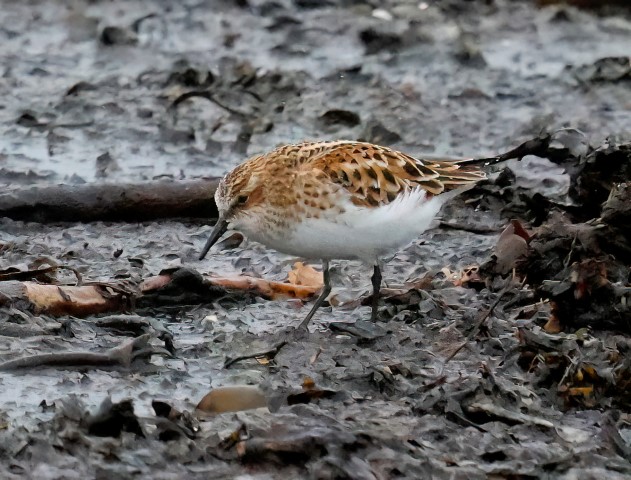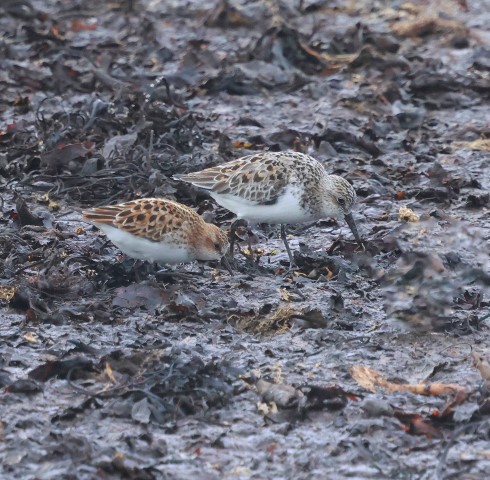Little Stint
Reports

On Monday 27 May, there was a report of a Little Stint on the shore in front of the Kinloch Hotel in Blackwaterfoot. This is the first Arran report of Little Stint in twenty-two years. The last report was from Machriewaterfoot in September 2002. This uncommon passage migrant was actively feeding on rotting seaweed along with twenty Sanderling and eight Dunlin. They were all feeding-up prior to continuing their northward migration. The Little Stint was smaller than both the other species with rusty orange tones and on the mantle, an obvious yellowish "V". The Little Stint was in breeding plumage while the group of Dunlin and Sanderling had birds in breeding and in non-breeding plumage. It was quite a spectacle on the narrow stretch of shore on the rising tide. The essence of Little Stint was captured in the photographs taken in the rain by Ewan Urquhart on Tuesday 28 May.
The Little Stint ( (Calidris minuta) is a very small wader. The name minuta reflects its small size. It breeds in arctic Europe and Asia, and is a long-distance migrant, wintering south in Africa and south Asia. Occasionally it is a vagrant to North America and to Australia. Its small size, fine dark bill, dark legs and quicker movements help distinguish this species from most other waders. The numbers of this species depend on the population of lemmings in their Arctic breeding area. In poor lemming years, when there are few of these rodents around , predatory species such as Skuas and Snowy Owl take these Arctic-breeding waders instead.
Some of these remarkable little birds migrate over 12,000 kilometres between their wintering grounds in South Africa and their breeding areas in Siberia. To undertake this impressive journey, these small waders fuel up by storing proteins and fat in their bodies. However, while they are at their wintering grounds, Little Stints also start moulting which involves the fast turnover of body proteins and a large energy investment in the production of new feathers. To avoid the conflicting energy allocations of fuelling-up and moulting, most migrating species separate these two processes in time. Little Stint, however, seem capable of simultaneously moulting and fuelling when there is abundant food.
Little Stint occurs in Scotland as a double passage migrant, being far more common in autumn than in spring, although autumn numbers vary widely from year to year. Most are recorded in coastal areas in the east of the country although it is regularly noted on the west and more occasionally inland. It is also a very rare winter visitor.
